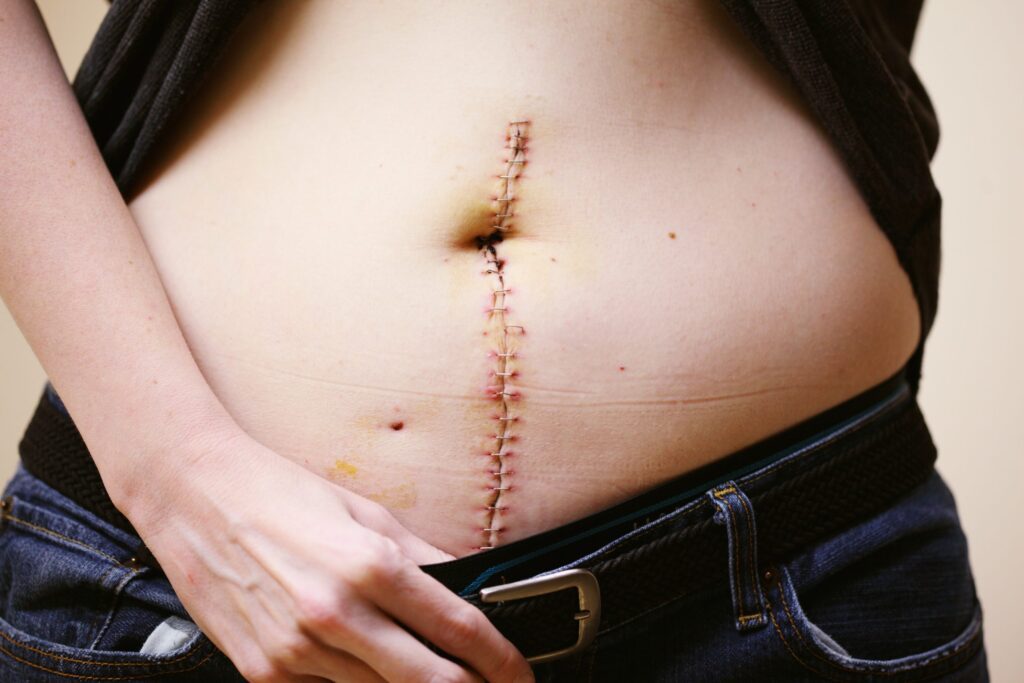Fascia—the connective tissue that runs throughout the body—plays a much greater role in the healing process after surgery than previously thought. It connects muscles, wraps around organs, carries nerve pathways, and holds our body structure together. But when fascia is disrupted through surgical trauma, inactivity, or stress, it can become tight, sticky, or painful. This is exactly where Uli’s method comes in.
After knee surgery, for example, patients often complain of pulling sensations, limited mobility, or pressure sensitivity—even if the incision appears well-healed. These symptoms are frequently due to fascial adhesions that restrict the gliding of tissue layers. When skin, fascia, and muscles can’t move smoothly, tension builds—affecting not only the local area but the entire body structure.
Uli’s scar therapy uses gentle yet effective manual techniques to restore fascia mobility. Through careful pressure, adhesions are released, elasticity is promoted, and the body regains natural movement. The process is painless, adapted to each individual, and respects the healing rhythm of the body.
Fascia is rich in sensory receptors, meaning its condition influences body awareness, posture, and even emotions. If fascial tension remains unresolved after surgery, it can lead to chronic issues—such as hip, back, or shoulder pain. Uli’s approach sees the body as a functional unit and relieves tissue holistically.
Another benefit is improved microcirculation. Releasing fascial restrictions boosts blood flow, enhances metabolic exchange, and accelerates recovery. Swelling decreases faster, lymphatic drainage improves, and tissues become more resilient.
Many patients describe an immediate sense of relief after fascial work: less pulling, smoother movements, a “lighter” knee. Even longstanding pain can improve after just a few sessions.
Fascial care is a core component of effective scar therapy. It doesn’t replace traditional physical therapy but complements it by addressing areas that standard exercises often miss—through fine, responsive interaction with the body’s connective network.
For anyone seeking freedom of movement, reduced pain, and long-term healing after surgery, fascia should never be overlooked. That’s why fascial work is a fundamental part of Uli’s holistic method.

